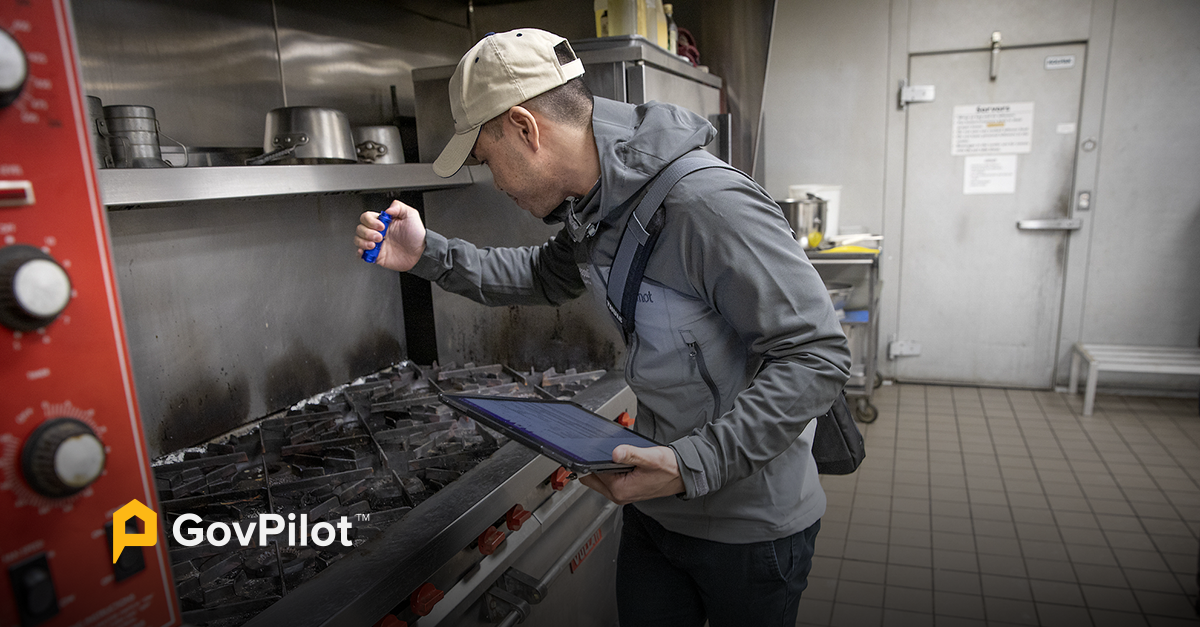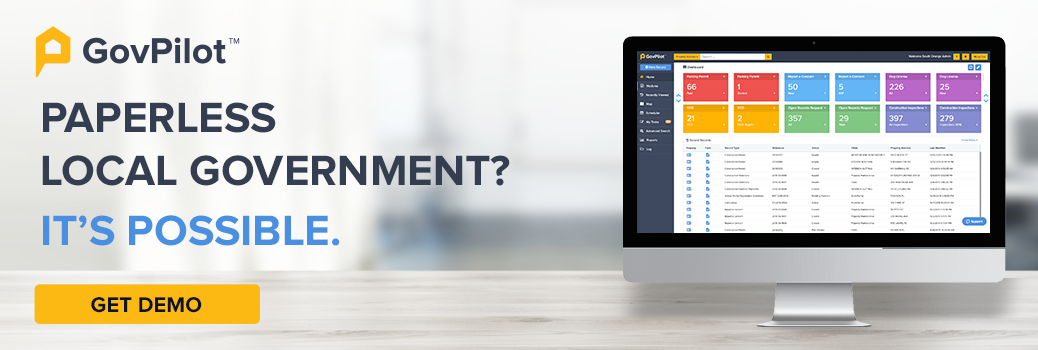When it comes to local health inspections, ensuring that retail food establishments meet local, state, and federal quality standards is vital to protecting your citizens’ health. Yet, for many local health departments, retail food inspections are inefficient and performed infrequently, allowing for health code violations to slip through the cracks.
There are many key considerations your local government is legally required to include in the inspection process to ensure foodborne illnesses aren’t spread. Here’s everything local health departments need to know municipal services including, restaurant health inspections and how government technology can help streamline the inspection and licensing process.
Why Are Retail Food Inspections Critical to Local Public Health?
Keeping restaurants safe and sanitary is essential to maintaining the quality of the food that is being served. Your local government can hold local retail food establishments accountable by assessing the ways in which restaurants store, prepare, process, package, and dispose of food and related waste.
Doing so will ensure that both your local citizens as well as restaurant employees are safe and not exposed to anything toxic in their food or within the air space at the facility.
Failure of governments to properly manage retail food inspections and hold restaurants accountable could result in unsanitary conditions in which the food isn’t safe for public consumption.
What Are Key Federal Policies Regarding Restaurant Health Inspections?
The U.S. Food and Drug Administration has established key federal retail food inspection standards to be adopted by state and local governments.
Here are key considerations from the federal government that are reflected in state-mandated food codes.
Federal Retail Food Inspection Standards
The FDA’s Food Code is established as a, ”model for safeguarding public health and ensuring food is unadulterated and honestly presented when offered to the consumer.” It can and should be adopted by local health departments and related agencies to delegate, “compliance responsibilities for food service, retail food stores, or food vending operations.”
Here are key takeaways from the documentation that should be applied by local health departments:
1. Inspector Questioning of “Person in Charge”
The permit holder of a particular food service establishment, referred to by the FDA as the Person in Charge, is obligated to address questions by the health inspector.
Here are key areas the health inspector should cover and record notes on when interviewing the Person in Charge. The permit holder is required to have a thorough understanding of the following restaurant processes:
- Hygienic precautions employees are required to take to prevent transmission of foodborne illnesses
- Precautions the Person in Charge is taking to
- “[maintain] the food establishment in a clean condition and in good repair.
- manage techniques for preventing cross contamination and employee contact with ready-to-eat-foods that can cause foodborne illnesses.
- Time and temperature requirement for cooking the types of food at hand, including meat, eggs, and fish and hazards associated with, “the consumption of raw or undercooked meat, poultry, eggs, and fish.”
- Time and temperature requirements for refrigerating, storing, cooling, and reheating relevant food products.
- The health consequences for customers if a foodborne illness is transmitted via food.
- The foods utilized in the establishment that are known as major food allergens and adverse effects that can occur if someone has an allergic reaction.
- The equipment being utilized to ensure food safety and the quantity and capacity of each.
- Sanitization processes for utensils, surfaces, and equipment.
- The sources of water being used and processes to prevent water contamination
- “Poisonous or toxic materials in the food establishment and the procedures necessary to ensure that they are safely stored, dispensed, used, and disposed of.”
- The establishment’s strategy for meeting federal laws outlined in the Hazard Analysis Critical Control Point (HACCP) guidelines.
The full set of question-types that an inspector is required to inquire with the Person in Charge about are located in Chapter 2, page 44 of the FDA Food Code.
Upon successfully answering the health inspector’s questions, the Person in Charges is deemed eligible to be certified as a food protection manager that must abide by Conference of Food Protection standards.
2. Expectations of Inspectors When Reviewing Equipment
When inspecting food establishments, health inspectors need to inspect:
- “That food is safe and unadulterated.”
- “Whether the facilities or equipment are in good repair and capable of being maintained in a sanitary condition”
- That food contact surfaces meet 4-101 standards (see page 107 of the FDA Food Code for more details)
- “Whether the capacities of cooling, heating, and holding equipment are sufficient”
- Proof from the permit holder that equipment will be replaced and maintained in compliance with federal law.
- Potential additional measures for an establishment to take outside of the code requirements, “if necessary to protect against public health hazards or nuisances.” Documentation will need to be established for the establishment’s reference and stored by the local health department.
- The potential waiving of FDA code requirements (referred to in the document as a variance) when and the Person in Charge requests it and the opinion of the inspector is that, “a health hazard or nuisance will not result from the variance,”. Any time a variance is requested, the Person must submit a statement:
- of the proposed variance and specific code section numbers the variance is in relation to
- Their rationale for the variance and how their proposed methodology will prevent hazards and nuisances.
- A HACCP plan (if required under § 8-201.14 - page 168 of FDA Food Code)
- That trade secrets being disclosed are treated as completely confidential information
3. Permit Requirements
Permits are required for any food establishment to operate, and must be submitted at least 30 days before the planned opening date. Specific details about the information that must be included in your government’s permit application are available on page 171 of the FDA Food Code.
A permit can be approved by the local health department when:
- “A properly completed application is submitted
- The required fee is submitted to your government
- The required plans, specifications, and information are reviewed and approved; and
- “A preoperational inspection… shows that the establishment is built or remodeled in accordance with the approved plans and specifications and that the establishment is in compliance with [the FDA Food Code]”
4. State Retail Food Inspection Standards
Every state must abide by federal policies and have a food code of their own. For specific details about your state’s food code requirements that go beyond the federal code compliance requirements, here is the FDA’s page for State Retail and Food Service Codes and Regulations by State.
How Does Health Department Technology Help With Retail Food Inspections?
As the specific details from the FDA outlined above, there is a lot your local health department needs to prioritize when performing retail food establishment inspections.
Here are key ways that government software can assist in these restaurant inspection processes:
1. Digital Health Inspection Forms & Data Storage
Digital health inspections for restaurants (or any type of establishment) make it easy for inspectors to take notes from a mobile field device like a phone or tablet.
Whenever an inspection is completed, the records are automatically stored in the cloud and made accessible alongside the full set of property records for the establishment at hand. All relevant government officials can then access the inspection forms in a few clicks via a property search functionality or by pulling the address up on a localized GIS map.
Inspection forms and all essential health department data can be stored in the government cloud. Learn more about Local Government Data Storage.
2. Streamlined Scheduling of Health Inspections
Whenever a new food establishment registers for a health permit / license, or an annual inspection date is approaching for an established restaurant, health inspectors can get automated notifications about needing to schedule a date and time to inspect a facility.
Save time with better scheduling processes, and ensure accountability of health inspectors so that facility inspections don’t fall through the cracks. Doing so will ensure that restaurants maintain code compliance requirements and citizens are safe from foodborne illnesses, while restaurant owners and operators receive updated licenses in a timely manner.
How Can Governments Encourage Staff Accountability? Here are additional considerations for your health department and entire locality.
3. Online Retail Food Permit Applications
Government software allows your local government to make all permit and licensing forms accessible from your government website, including retail food permits.
Encourage new establishment owners to register online. Once their application is submitted and a restaurant inspection takes place, your local government can approve or deny the application digitally and notify the restaurant owner of their application status. Automated submission of inspection certification can be sent to retail food establishments as well.
Learn more about How Digital Permitting Works?
4. Online Inspection Requests
Giving businesses the option to schedule relevant inspections themselves is an effective means for streamlining inspection scheduling processes while building stronger private-public sector partnerships.
With GovPilot, any local business owner can go online to register for relevant health inspections in their industry.
5. Insightful Retail Food Data for Your Local Government
Both the health department and critical decision-makers in other local government departments can use critical data collected about retail food service businesses to make informed strategic planning decisions.
- Are certain aspects of your processes resulting in a food company not passing their inspections? Identify trends and work with local businesses to address these issues.
- Are restaurants generating revenue for your local government? Which application fees are generating funds for your health department? See financial trends and invest in economic development in the retail food niche.
Learn more about Using Data to Make Informed Local Government Strategic Plans.
Modernly Managing Your Local Retail Food Health Standards
Most Americans are eating out at least several days a week. Your local government owes it to your citizens to ensure that they’re not getting foodborne illnesses as a result of ineffective food management at local retail food stores.
Going digital is an effective manner for improving your retail food health inspection processes. With automated notification of upcoming retail food inspection deadlines, time-saving digital inspection forms, and instant storage of critical inspection files in the cloud, your local government can get inspections done faster and more efficiently.
Learn more about how you can embrace health inspection technology for inspections and beyond with GovPilot.
Local Government Food Inspection FAQs
What is retail food inspection software?
Retail food inspection software is a digital form used by health departments to record inspections via a government phone or tablet. Once an inspection takes place, the inspection records and all related documents are stored and instantly accessible in the cloud.
What types of digital inspection forms are available?
GovInspect inspection software offers customizable inspection forms for the health department and beyond. Various retail food establishments have different inspection requirements depending on the food they’re serving, the size of the restaurant, number of employees, etc. so your local health department can create various inspection forms for restaurants and other food facility-types for inspectors to pull up digitally in the field.
Local governments can utilize the same approach to inspections across departments, including construction and building inspections and code inspections for various types of properties.
Read on:
- NJDOH Grants for Local Public Health Infrastructure: What to Know
- US Infrastructure Bill: What the Bill Means for Local Governments
- American Rescue Plan Act: What the Bill Means for Local Infrastructure
- Federal Cybersecurity Grants for Local Governments: Everything to Know
- Best Software for Government Procurement
Sources









